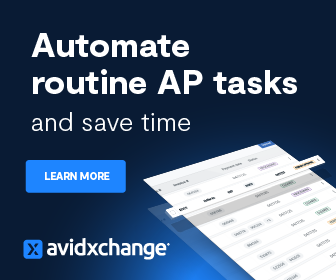Whether you’re the day-to-day leader at a big company or a controller-in-name-only who deals with all the tasks appointed to a big-company CFO, you already know that the last few weeks have been a challenge. The outbreak of the Coronavirus has likely put some kind of strain on your business, and you’ve probably been working overtime to fight off the impact on your business.
Paired with our cash management tips for controllers, we would also like to share with you some resources for supplementing your cash flow during the pandemic. From SBA loans and grants, to delays in collection for businesses with existing loans to money earmarked for in the CARES Act, there are ways to keep your business moving throughout the pandemic. Here’s how.
Emergency Stimulus: Something for Everyone
While the bill ended up with a little more than a pork-free “interest free loans for businesses and a check for every American,” the $2T Cares Act includes a variety of ways to help businesses stem the tide of the Coronavirus pandemic.
After weeks of negotiations, the Senate unanimously approved the package, which is one of the largest in U.S. history. The Coronavirus Aid, Relief, and Economic Security Act, known as the Cares Act, addresses the impact of Covid-19 on the U.S. economy. The House of Representatives must still vote on the legislation, H.R. 748, which is expected to pass Friday.
Though it includes a variety of provisions, some of the more important parts re the following:
Paycheck Protection Program
The Paycheck Protection Program includes $350 billion in federally guaranteed small-business loans provided through a network of more than 800 banks. The Paycheck program provides eight weeks of cash-flow assistance to small businesses with 500 employees or fewer.
The low-interest loans are meant to cover payroll costs, paid sick leave, supply-chain disruptions, employee salaries, health-insurance premiums, and mortgage payments.
This is the main portion of the bill—at least as it pertains to your business. According to Fast Company, here are a few things you need to know:
Who can apply?
Businesses and nonprofits with 500 or fewer employees are generally eligible for the loans. But the loans aren’t restricted to companies: Self-employed workers and gig workers, such as drivers for ride-share apps, also qualify.
Qualified borrowers must have been in business before February 15, and must have paid employee salaries and payroll taxes or contractors.
How much?
Businesses can receive loans up to $10 million at up to 4% interest rates, depending on how much they paid their employees between January 1 and February 29.
Who’s handling this?
Loans will be provided through banks, credit unions, and other lenders, and will be guaranteed by the Small Business Administration. Loan applications should be submitted through lenders who are partnered with the Small Business Administration.
How long with it take?
The loan process could become a same-day process as early as next week, in which case loans would be signed and disbursed within 24 hours.
What’s the catch?
The program is called “Paycheck Protection Program” because it’s meant to ensure that businesses have the funds to pay their employees and to prevent layoffs. Loans offered through the program are forgivable, if used for their intended purpose: As long as a business receiving a loan maintains the average size of its workforce, it will only need to pay back the interest accrued, and the principal will effectively become a grant.
SBA Grants to Cover Interest on Current SBA Loans
According to Senate Minority Leader Chuck Schumer’s office, the deal also includes $10 billion in Small Business Administration emergency grants and up to $10 million of emergency relief per business. It allocates $17 billion for the SBA to cover six months of payment for small businesses with existing SBA loans.
Payroll and Social Security Payroll Tax Delays
Employers are eligible for a 50 percent refundable payroll tax credit on wages paid up to $10,000 during the crisis. The credit would be available to employers whose businesses were disrupted due to virus shutdowns and those that had a decrease in gross receipts of 50 percent or more when compared to the same quarter last year.
The credit can be claimed for employees who are retained but not currently working due to the crisis for firms with more than 100 employees, and for all employee wages for firms with 100 or fewer employees.
Employer-side Social Security payroll tax payments may be delayed until January 1, 2021, with 50 percent owed on December 31, 2021 and the other half owed on December 31, 2022. The Social Security Trust Fund will be backfilled by general revenue in the interim period.
Net Operating Loss Suspension, Expanded Carryback
According to the nonpartisan Tax Foundation, Firms may take net operating losses (NOLs) earned in 2018, 2019, or 2020 and carry back those losses five years. The NOL limit of 80 percent of taxable income is also suspended, so firms may use NOLs they have to fully offset their taxable income. The bill also modifies loss limitations for non-corporate taxpayers, including rules governing excess farm losses, and makes a technical correction to the treatment of NOLs for the 2017 and 2018 tax years.
Stay in the Know: Controllers Council
At the Controllers Council, we’re here to provide you the advice you need—whether it’s a time of crisis or plenty. Stay up to date with all the latest news and advice you need to keep your finances moving by subscribing to our newsletter.




